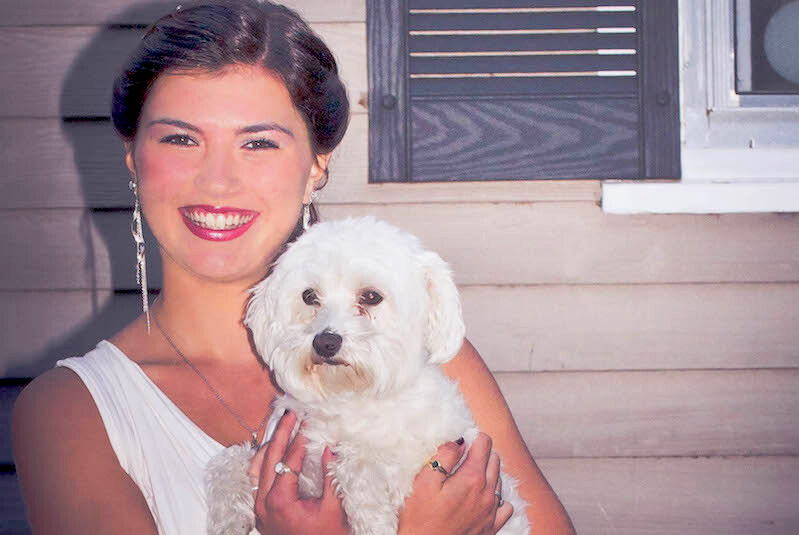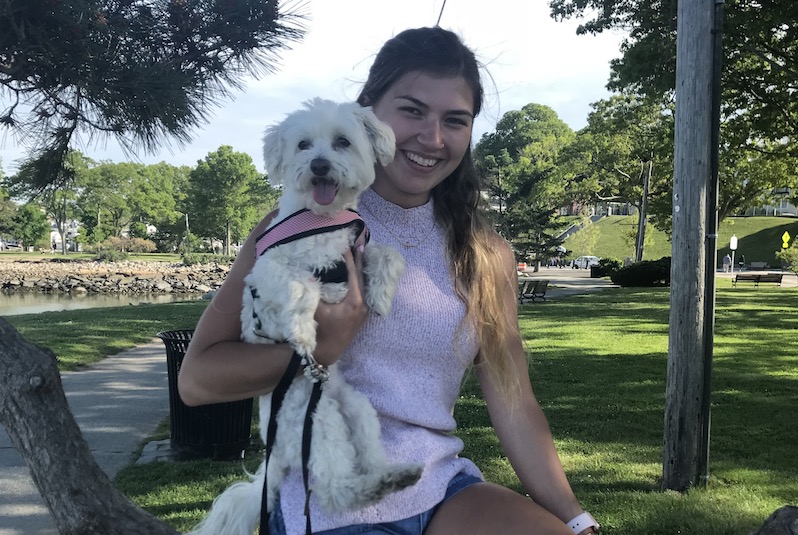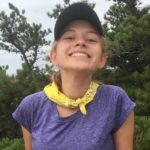Carolann’s story: When it’s more than a concussion

Cheerleading had always been a big part of Carolann Hurley’s life. So when she was dropped by accident as a sophomore in high school and diagnosed with a concussion, she had no intention of stopping. It wasn’t her first concussion. But this time was different — she kept blacking out and was having frequent migraines — and they weren’t going away.
“I was seeing a special doctor for my concussion and doing physical therapy, but I kept feeling sick and getting dizzy,” Carolann says. “I just wanted to cheer and be a normal teenager.”
But after this concussion her life was far from normal. “It was a really hard time for me. I was in high school, but I had to limit a lot of the things I did because of the dizziness,” she says. “I could only go to a couple of periods of school at a time and I had to wear sunglasses in class. I wasn’t able to watch TV or read, and couldn’t continue with my waitressing job.”
A referral to the Balance and Vestibular Program
After about a year with no improvement, she was referred to Dr. Jacob Brodsky, director of the Balance and Vestibular Program at Boston Children’s Hospital, who evaluated her in the Multidisciplinary Concussion Clinic.
Dr. Brodsky found she had hearing loss, and ordered a CT scan of her inner ear. “The scan was normal, but I suspected a possible leak from her inner ear (perilymphatic fistula), which is a diagnosis that can only be made with surgical exploration,” says Dr. Brodsky.

“He explained to me and my mom what was happening inside my ear and how it was causing my vertigo and headaches,” Carolann days. “He recommended surgery, which I had in March 2012.”
Once in surgery, Dr. Brodsky discovered that her ear was far more damaged than he had initially thought. “We confirmed and fixed the leak in her inner ear and found that her hearing bone (stapes) was fractured, which we fixed,” says Dr Brodsky. “After her initial post-op recovery, I was glad to see her return to school and work full time and resume driving.”
A second surgery and a slow but steady recovery
Although the surgery was successful in addressing her vertigo, she developed a persistent eardrum perforation following the surgery. Dr. Brodsky recommended a second surgery to help with her hearing.
Before going into the surgery, Dr. Brodsky explained that because of the nature of her prior injury and repair, there was a high risk her vertigo would return if he was to perform an aggressive repair of her eardrum and hearing bones. She agreed she would rather have the hearing loss and use a hearing aid than risk having the vertigo issues again.
Now, seven years later, she has continued to improve, though she has had to take things slowly. She went through physical therapy and worked hard to finish high school and start college.
Though Carolann’s hearing is now stable, she has residual moderate hearing loss in her right ear. She also has declining hearing in her left ear due to a eustachian tube dysfunction, which has nothing to do with her many falls.
“I’m still doing all the things I want to do, but I have to go a little slower, because I physically can’t do too much,” she says. “I had no idea that my inner ear could cause so much damage. I was a teenager who wanted to do my own thing and cheered even though I had a concussion and my doctors were telling me to sit out. I wouldn’t give it up.”

Finding a new hobby, and career
Though cheering is no longer an option, Carolann is now able to run and exercise. And she’s found a new hobby she loves almost as much as cheerleading — animals. She has three dogs, two Maltese and a chihuahua, and is working as a vet tech while going to veterinary school full time. She also loves to travel, though she needs to use eardrops before flying to protect her eardrums.
Carolann also continues to see Dr. Brodsky about every six to nine months. “Dr. Brodsky has been the most important person in helping me recover,” she says. “He was able to fix my vertigo and dizziness and he always has good recommendations if I’m having any problems with my ears. I can just call him and describe how my ear is feeling and he knows what to do.”
Learn more about the Balance and Vestibular Program.
Related Posts :
-

Isolde’s story: A concussion leads to 3PD
When Isolde Edson was injured in the fall of 2018, during the last junior varsity soccer game of the season, she ...
-

‘Challenge accepted’: Sophia takes on a brain tumor
In 2023, Sophia Mordini landed the role of a lifetime. A competitive dancer, the 12-year-old would play Clara in her company’...
-

After surgeries to treat HLHS, Carter is healthy and happy at home in Florida
Carter Miller loves action. The 4-year-old Florida resident enjoys riding on golf carts and flying high on swing sets. ...
-

Understanding and treating Mason’s congenital nevus
Kim and Ryan noticed their son’s birthmark almost immediately after he was born. They knew birthmarks were common, but ...





